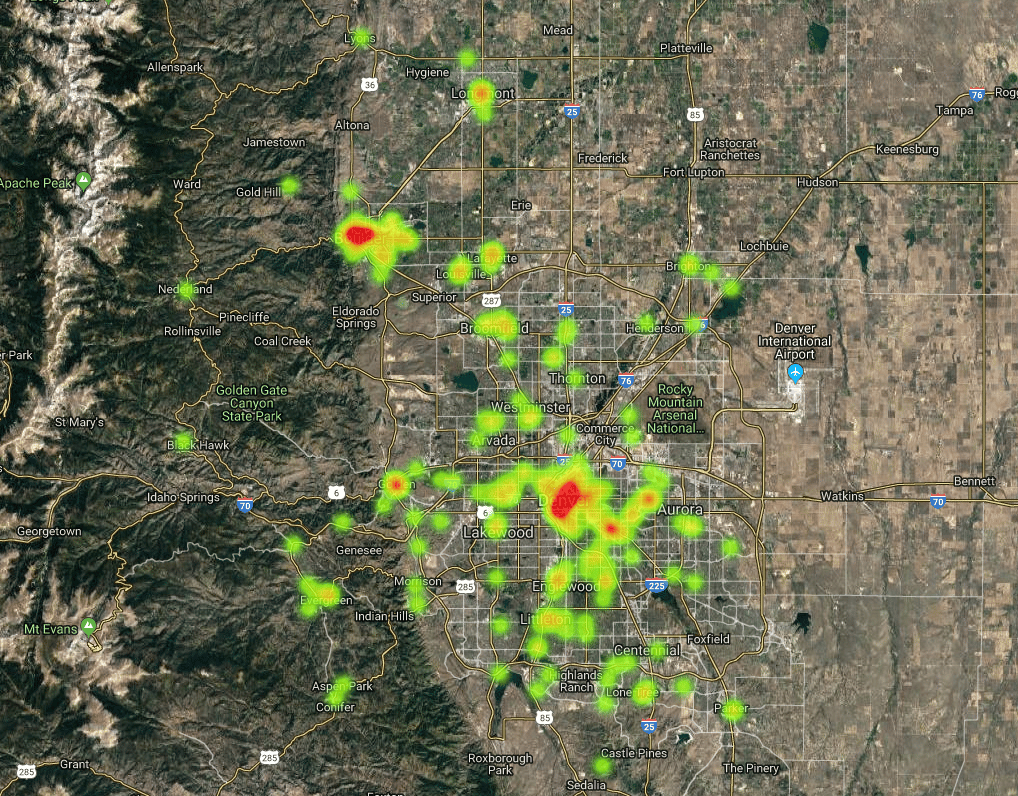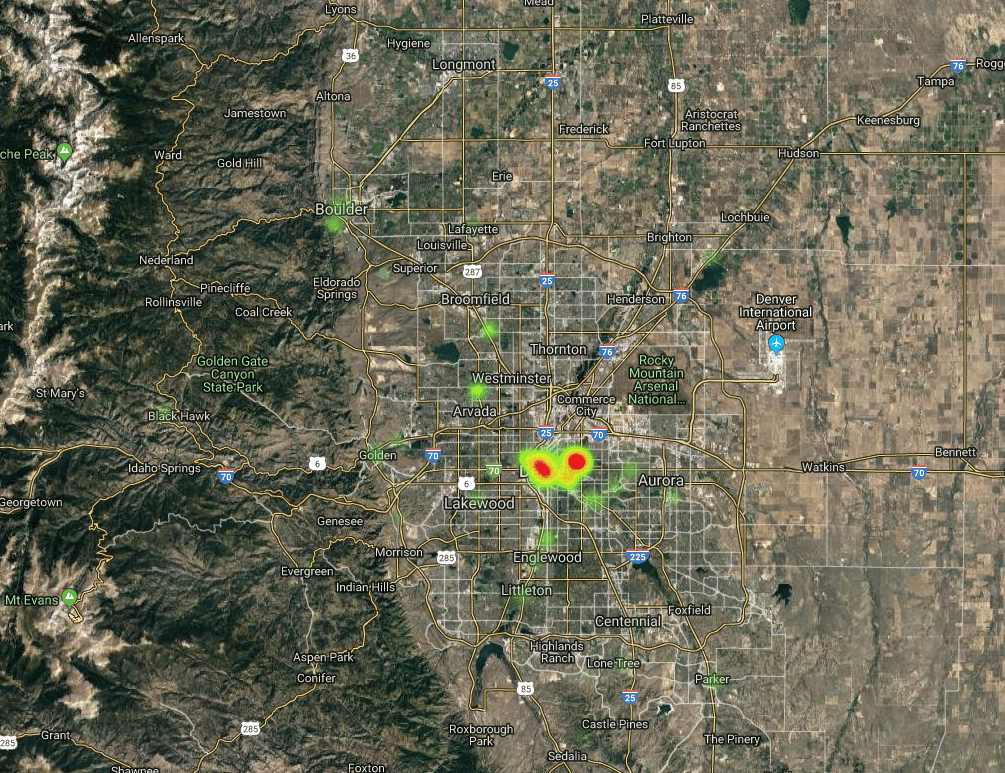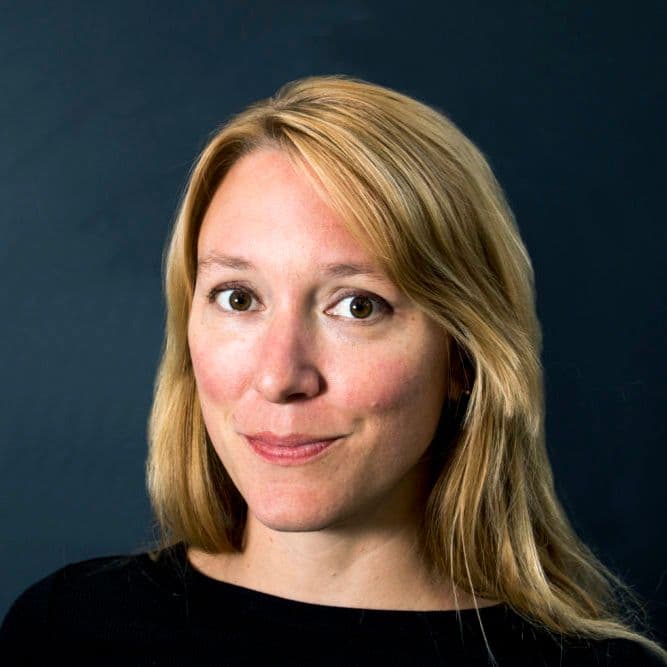The Scientific and Cultural Facilities District is -- as you may know if you work in the arts or read your ballot carefully -- an enormous, complicated thing.
At its simplest, this is the deal: The district encompasses Adams, Arapahoe, Boulder, Broomfield, Denver, Douglas and Jefferson Counties. Throughout those counties, SCFD collects a 1/10 of 1 percent sales and use tax. That's 1 cent on every $10 you spend. That money is then distributed to hundreds of arts and science organizations across the district. How that's done is where it gets complicated, so we'll get back to that in a minute.
First, let's talk about how we feel about all this because, yes, there are a few ways you could feel about a complex tax district.
You want your hard-earned and sensibly (or insensibly) spent money to be spent sensibly by your government, for one thing. And for another thing, where and how that money is spent reflects our state's and counties' priorities. It tells us what our elected and unelected officials think is most worthy of financial support and which communities can get and support arts and sciences organizations.
"From our standpoint we believe that the arts are critically important to maintain a vibrant community, a great place to live, to work to raise a family," said Gary Steuer, president and CEO of the Bonfils-Stanton Foundation, whose mission is to support the arts in Denver.
"There's often focus on the economic impact of the arts, and certainly that's true. The arts can and do have a significant economic impact which translates into tax revenue and employment for folks. But I think it also goes far beyond that in creating a sense of place, creating, vibrancy at the community level. I think there's also and equity and social justice aspect to this."
So, speaking of a sense of place ...
Here's a heat map of all organizations receiving SCFD funds.
No big surprises here. Denver and Boulder are red-hot and there are little heat pockets in Golden and Aurora.

There are extremely obvious reasons for this -- the main one being that Denver is a big city with many arts and sciences organizations situated downtown and nearby.
Boulder isn't a big city, but it's a well-known hub for both artistic and scientific endeavors. Both cities are home to big-name institutions like the Denver Art Museum and eTown, both are positively crawling with small choirs and bands, and neither want for the art galleries, historical societies or dance companies that fill out the list.
Aurora and Golden's heat comes from the intentional clustering of arts and sciences organizations within the cities. In Aurora, Downtown Aurora Visual Arts, Vintage Theatre, Aurora Symphony Orchestra, Inside the Orchestra and Kim Robards Dance are all within a few blocks of each other, with Grand Design not far away. In Golden, the Jefferson Symphony Association, Miners Alley Playhouse, Golden Landmarks Association and Foothills Art Center are just a few blocks apart along Washington Avenue downtown, and the Golden Chamber Choir, Golden History Museums and Colorado Mountain Club are right nearby.
Zoom in a bit on Denver and here's what you get: higher concentrations in downtown and SCFD deserts in the more residential and suburban-feeling neighborhoods.

And here's the map again, weighted by how much money goes where.

No big surprises here either. It's glowing red where the Tier I organizations are located (and surrounded by Tier II and III organizations).
Eleven of 27 Tier II organizations are in Denver and they receive about $3.4 million of the tier's $12.2 million. Denver organizations make up at least 74 of the 245 Tier III organizations (there were a handful of organizations for which we were unable to find a precise location) and receive about $3 million of the tier's $7.5 million.
But it's really the Tier I group that makes the difference. All five and their $37.3 million are in downtown Denver.
Residents who aren't near downtown have to work a little harder to take advantage of the district's offerings.
"I'm not upset that the map shows what it shows. I understand the nature of my district," District 2 Councilman Kevin Flynn said.
It's a highly residential area with few commercial areas and a lot of bedroom communities, he said. There simply aren't organizations there for SCFD to support.
"But here in the southwest metro area," he added, "we can change that."
And in fact he hopes to see his district's first SCFD organization come to life in the somewhat near future. As development moves forward on the Loretto Heights campus in Harvey Park, Flynn has his eye on the May Bonfils-Stanton Theater, "a tremendous, 900- to 1,000-seat performing arts center on the campus that we are diligently trying to save."
His council office, Denver Arts & Venues, Westside Investment Partners (which bought the campus) and the Bonfils-Stanton Foundation are funding a marketing and feasibility study to identify what the market is for a performing arts center in southwest Denver. Flynn also went to SCFD and together they looked at what Tier III organizations would be able to use the venue.
And therein lies part of the thinking in SCFD money distribution: Organizations located in downtown Denver -- or Boulder or Aurora -- can and do serve people who live elsewhere. Tier III-qualified organizations, for instance, can apply for money in more than one county if they can prove they serve each of those counties.
"It's important to realize it's not just about directly where the grants are going but are the services getting out into those communities," Steuer said. "... If you sit in on the SCFD board meetings where, let's say, the Tier Is present on a regular basis ... It's a question that often comes up and they're able to say, 'Ten percent of our audience came from Adams County.'"
That's not necessarily the figure, but SCFD Executive Director Deborah Jordy did point out that attendance numbers for the five Tier I organizations mirror the population of the counties -- so for example Boulder County makes up about 9 percent of the metro population and about 9 percent of attendance at those five organizations is from Boulder County, she said.
Still, SCFD knows there's a difference between bringing people in from underserved communities and actually going into underserved communities.
"While it is true that funding follows the organizations and both the largest in size and in number are based in Denver County, we have been very focused on capacity-building across the seven-county district," Jordy said in an email. "We've been working to offer opportunities for our smaller organizations across the district to build skills and capacity in order to help them broaden their reach. These trainings are planned to be ongoing. Additionally, an inclusivity fund established by the big five organizations will provide grants to SCFD-funded organizations to deepen and broaden their offerings to traditionally underserved communities."
Again, SCFD is kind of complicated.
So, I asked Jordy and Colorado Business Committee for the Arts Program Director Meredith Badler how it all works to create this guide to the basics. (Note: "Basics" is a highly relative term.)
Who said you could give my money to arts and science organizations?
You did, probably. SCFD was created by voter approval in 1988 and it periodically requires voters to re-up its authority. That happened in 1994, 2004 and 2016. The most recent extension will last until 2030.
How much money does SCFD collect?
The annual report for 2017 shows $57,095,123.36 distributed to 277 organizations.
This year, it's expected to generate $56 million to be distributed across 301 organizations.
How does an organization become an SCFD organization?
The five organizations in Tier I are dictated in the state statute. So you don't become Tier I, you just are Tier I. Or you're not.
To be eligible for inclusion in Tier II or Tier III, an organization must meet the following criteria.
- The organization must primarily work in the area of performing arts, visual arts, cultural history, natural history or natural sciences.
- The organization must be a 501(c)(3) in good standing for at least five years.
- The organization must have the financial and organizational capacity to conduct the activities in its mission.
- The organization must be open to the public.
- The organization must conduct the majority of its activities in the state of Colorado.
- The organization must primarily serve the residents of the district.
How do they decide where my tax pennies go?
State statute sets aside 1.5 percent of the collected tax for the costs of actually operating SCFD. The remaining 98.5 percent gets distributed among the organizations. In 2017, that amounted to just over $57 million.
The distribution is different tier to tier. Tier I organizations receive an amount that is (you guessed it) dictated in the statute. The Denver Museum of Nature & Science gets 24.51 percent, the Denver Zoo gets 24.24 percent, the Denver Art Museum gets 20.31 percent, the Denver Center for the Performing Arts gets 17.68 percent and the Denver Botanic Gardens gets 13.25 percent. That's a 65.5 percent chunk all together, and $4.4 million on the low end and $9.3 million on the high end in 2017.
Tier II organizations, of which there were 27 in 2017, get 21 percent of SCFD funds, and the money is distributed based equally on the organization's annual income and its paid attendance. The qualifying income threshold for 2018 was $1,644,073.50. This is also dictated by state statute.
Tier III is a little different. State statute determines a lump sum each county receives, then the county's cultural council decides how to distribute the money. Funds given to Tier III organizations make up 13.5 percent of SCFD funds, and Tier III organizations, of which there are 245, make up 88 percent of the organizations receiving money.
Tier III sounds... extra complicated.
Yes. It's different in each county, but for an example I turned to Jefferson County. Clerk to the Board Diane Keathley, whose office works with the cultural council, laid out the process for me.
Organizations need to meet eligibility requirements in order to apply for SCFD funding, and that approval process is done through SCFD. Once approved, the organization enters the application process to get a piece of the money SCFD gives to the county. Applicants do a 10-15 minute interview with the cultural council, which is made up of volunteers, then the council meets to discuss the needs and double-check the eligibility requirements. Generally, this is where an organization gets turned down -- because it turns out it no longer meets the requirements. Next, the council gives its recommendations to the board of county commissioners, who approve it, then the cultural council goes to the SCFD board for final approval.
Records Keathley provided show that close to $1.4 million was made available to Jefferson County and 86 applicants requested nearly $1.9 million. None were recommended to receive more than they asked for and three were not recommended any money.
The tier system overall is the source of some frustration among some arts and science organizations and their supporters, and much of that frustration is rooted in Tier III. Back in early November, Katie Maltais, managing director of Curious Theatre Co., said there isn't enough accountability in how Tier III money is distributed in Denver and that the category is too broad, leaving some organizations in a tough position.
"There's this weird group that is caught between the tiers that is getting really sort of shut out of government funding," she said. "It's better than nothing, but if you were to think about if SCFD didn't exist and we had a larger philanthropic community and these tiers didn't exist, would Curious have more funding? It's something we think about."
"What we hear often is organizations or family foundation or individuals saying they don't need to support the arts because that's what SCFD is for," she added.
What's this financial support actually accomplishing?
The CBCA looks closely at the impact of SCFD organizations and publishes its findings in an economic impact study. Here are the highlights from its look at 2017:
- Arts and culture had an economic impact to the tune of $573 million in 2017, the study says -- up 12 percent from 2015.
- Arts and culture provided 11,820 jobs and $183.4 million in pay.
- About 15 million people participated in arts and culture.
- About 4.3 million school children received arts and culture education and 683,545 adults and children took classes with arts and culture organizations.
- Giving to arts and culture organizations totaled $182.6 million.
You can read much more about that here.
Can any of this change?
Yes, and it likely will.
"The statute can be changed by the legislature ahead of the next reauthorization," Jordy said in an email. "The statute was changed before the last reauthorization in 2016 to provide more funding for mid-sized (Tier II) and small (Tier III) organizations. Those changes came out of a multi-year process to develop funding formulas that reflected changes in the district since the previous reauthorization. We would anticipate that a similar process, and additional changes would be proposed ahead of the next reauthorization as well. The counties within the district will continue to grow and change and the SCFD should continue to evolve so that its core function of providing funding for culture for all is continually met."
Because I know you want to explore further, here's your interactive SCFD map.
Click on the dots to see how many of our tax dollars and cents are going where.
Correction: An earlier version of this story misidentified the SCFD annual administrative budget percentage and 2018 projections.













